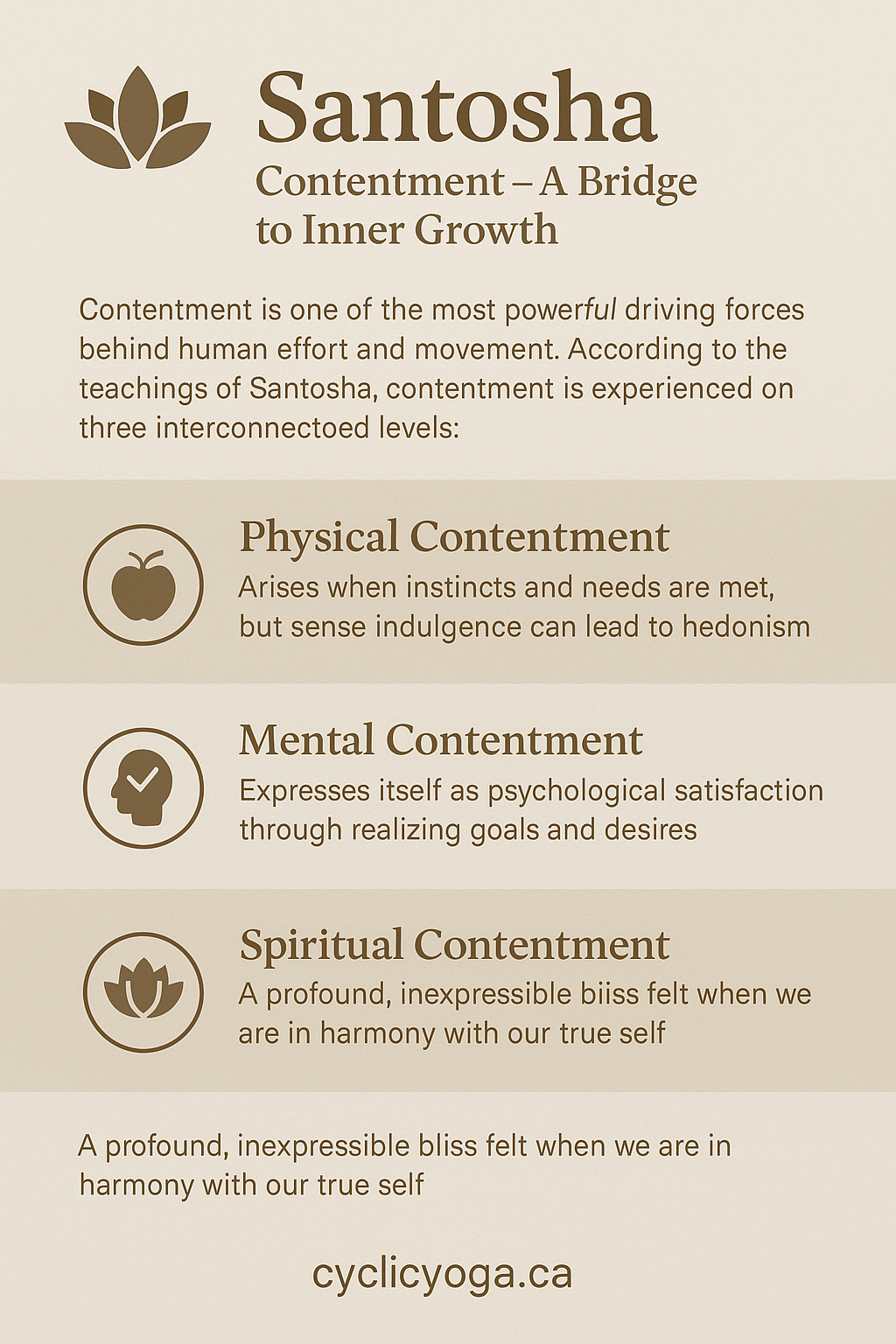Santosha: Contentment – A Bridge to Inner Growth
Contentment is one of the most powerful driving forces behind human effort and movement. Whether we are eating, drinking, exercising, enjoying leisure, or even engaging in worship, our core motivation is often a deep inner desire for satisfaction. Yoga acknowledges this essential human drive and explores it extensively in the second limb of practice—Niyama—through the principle known as Santosha, or contentment.
Santosha is a state of mental well-being. When we genuinely feel content within ourselves, our mental landscape becomes more positive, our latent potential begins to unfold, and the foundation for spiritual growth becomes significantly stronger.
In contrast, when inner contentment is absent and we operate under mental strain or dissatisfaction, our motivation to persist diminishes, and even the most meaningful pursuits can eventually be abandoned.
According to the teachings of Santosha, contentment is experienced on three interconnected levels:
1. Physical Contentment
Physical contentment arises when our basic physical needs and instincts are met—when we derive pleasure from fulfilling them. Eating a nourishing meal, enjoying restful sleep, or experiencing physical comfort can all bring moments of happiness.
However, these pleasures are temporary and fleeting. Their absence—or even the fear of their absence—can rob us of the joy they once brought. Conversely, overindulgence in these pleasures can lead to sensory dependency and hedonism.
That’s why Santosha emphasizes not only the art of appreciating life’s blessings but also the discipline of restraint—to enjoy without becoming enslaved to enjoyment.
2. Mental Contentment
Mental well-being expresses itself as psychological satisfaction. This form of contentment emerges when our goals, desires, and aspirations are fulfilled. Passing an important exam, mastering a new skill, or achieving a personal milestone can bring a deep sense of fulfillment.
Yet, when these efforts fall short, frustration or inner turmoil may replace satisfaction.
Interestingly, mental and physical contentment are often linked: many of us are willing to sacrifice short-term physical pleasures to attain long-term mental fulfillment, highlighting the hierarchy of deeper satisfaction.
3. Spiritual Contentment
Just as the essence of the soul differs from that of the body and mind, so too does the nature of spiritual joy.
When we bring joy to a grieving heart, or extend a hand to someone in need, we often feel a profound, indescribable bliss—a form of contentment known in yogic teachings as inner bliss (Ānanda). This is not a fleeting pleasure nor a conditional sense of satisfaction. It transcends logic and explanation.
This spiritual joy arises when we come into harmony with our true self—when we are aligned with our inner truth and connected to our deeper essence.
In the teachings of Santosha, these three dimensions—physical, mental, and spiritual—are acknowledged as paths to true well-being. Yogic wisdom provides tools for attaining each, while also addressing the obstacles that block our path to inner bliss.

